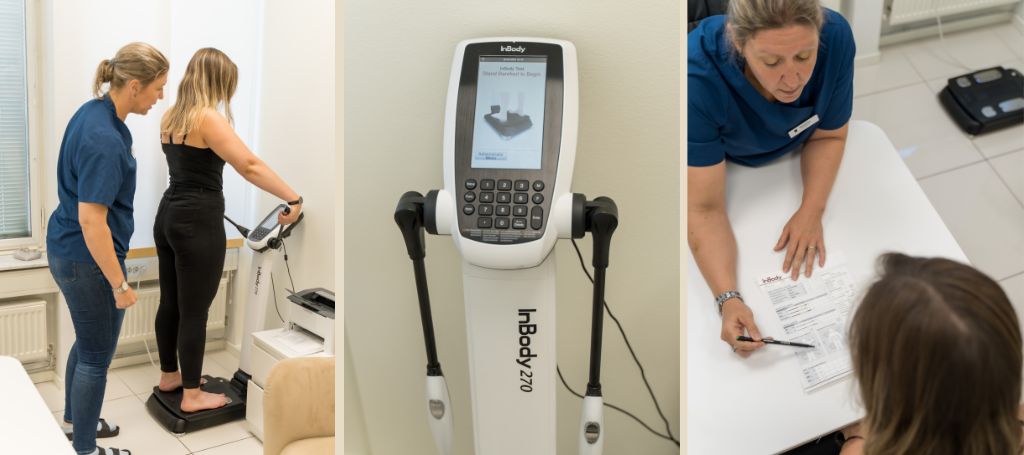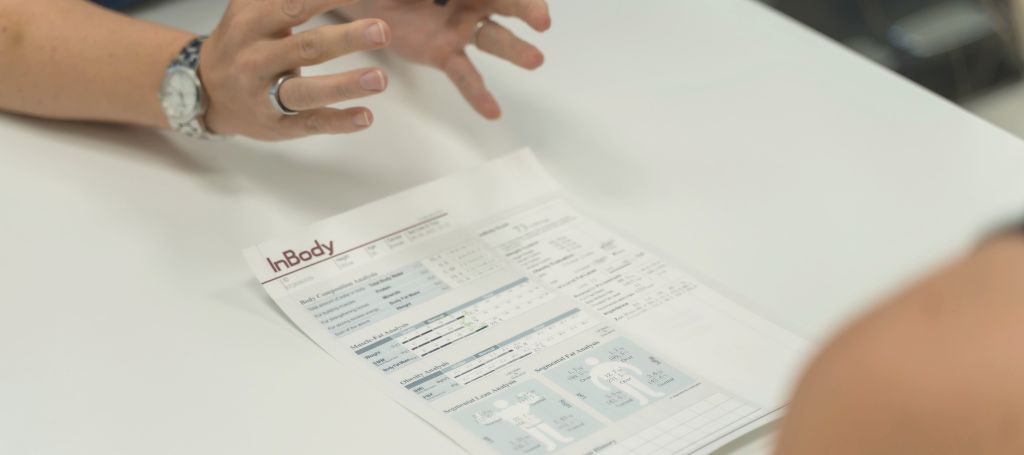About Estetikcentrum
Popular operations
Popular injection treatments
Popular skin care treatments
Popular dental treatments
Diet & Health
Popular medical treatments
About Estetikcentrum
Popular operations
Popular injection treatments
Popular skin care treatments
Popular dental treatments
Diet & Health
Popular medical treatments

Share the post
This article has been reviewed and approved by Certified Nutritionist Samantha Lerviken on February 8, 2024.
Sometimes it feels like no matter what we do, our weight is not going in the right direction. We eat well, exercise properly and stay away from sweets, but still the same stubborn number appears on the scale. But did you know that body health is so much more than just the number of pounds we weigh?
The human body is incredibly complex and is made up of different substances, all with varying densities. So when you feel thinner, but your weight is still the same as before, you may have gained muscle mass and lost fat.
Since a regular scale does not take into account the weight difference between fat and muscle, a InBody measurement can be a great tool to better understand your body. Measuring your body composition with a InBody scale gives both you and your coach, nutritionist or personal trainer a deeper understanding of your body and its needs and progress.
InBody is an advanced scale that measures your body's composition of fat, muscle and water instead of just weight. It does this through small electrical impulses sent through your body. Because fat, muscle and water have different electrical properties, the InBody scale can distinguish between them and calculate how much of each is in your body.

The measurement is done by standing barefoot on a scale and holding two handles to send small electrical impulses through your body. The resistance that the signals encounter is recorded and provides an estimate of what is fat, muscle or water in your body.
The pulses are very weak, so you won't feel them when the measurement is taken, but you should still not take a InBody measurement if you have a pacemaker or are pregnant, just to be on the safe side.
As you can see, there's a lot of information to be gleaned from a InBody weighing session that you can't get insight from just a bathroom scale and a tape measure. This also means that you can compare your body more fairly before and after an exercise program to see exactly how much better your body became after your efforts.
Whether your goal is to lose weight, build muscle or get better health in general, InBody measurements can be a tool to get the insight you need to make sure you're going in the right direction.

During the measurement, you stand on the InBody scale barefoot and hold your arms outwards with one handle in each hand.
You don't have to do anything during the measurement itself. Just stand relaxed with your feet on the marked spots on the scale. The measurement usually takes 2-3 minutes and you will not feel the faint electrical signals sent through your body.
We usually recommend not to eat or drink just before the measurement, as food and drink in the stomach can affect the result and is perceived by the scale as fat mass. It is also best not to exercise just before the measurement, as physical activity can affect the body's water balance and thus the result of the measurement.
After the measurement, you will receive a printout with all the values. If you do the InBody weighing on Estetikcentrum , you will always have a review with our trained dietician who can explain what all the results mean and where you need to improve. Without this insight, it can be difficult to decipher what all the numbers mean or do anything about the results.
If you have a specific goal or are undergoing an exercise program, we recommend that you take a InBody measurement regularly to track your progress along the way. About 2-4 weeks apart is usually enough to see a difference.
InBody-measurement provides a good starting point for setting goals and working towards a healthier body composition. It can be used whether you are exercising, having a tummy tuck with or without liposuction, or participating in our Allurion or Saxess programs.
Would you like to book a InBody measurement at Estetikcentrum in Malmö? You can do so by clicking here.